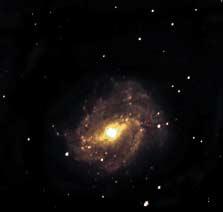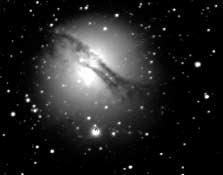
3 minute read
Astronomy
Astronomy M16 by Dannel Yeo
With a beautiful showing of Comet McNaught, the brightest comet in over forty years and clearly visible to the naked eye, 2007 started with a bang for astronomers in WA. If you missed it, don’t hold your breath. Comet McNaught came in from the depth of
Mr William Cooper Observatory Manager the Oort cloud. The precise orbit of Comet McNaught is not known, but current estimates indicate it may escape the sun altogether. This can happen if a comet picks up some extra speed while falling towards the sun. Conversely, on 28 August the total eclipse of the moon was a disappointment in cloud-covered Perth, though further up the coast in Broome it was reportedly spectacular. Thanks to funding from the Australian School Innovation in Science, Technology and Mathematics (ASISTM), Trinity College Observatory has led a group of schools through the intricacies of robotic telescopes and our students can now log on to the telescope via the internet from home and take their own images to subsequently process in school. We began the year with a new camera, an Apogee Alta, for the Brokwell telescope. This camera gives us a much larger image and downloads faster to the observatory computer, allowing more work to be completed in an evening. In the Astronomy Club, Vincent Jusko (11.6) has kept us up-to-date with observing highlights each month and Tom Drage (11.6) has continued to develop our radio telescope. Currently he is building a small aerial that will cancel out local noise from our celestial radio signals. Marcus Bunn (9.6) has been bringing himself up to speed so that he can take control of the radio telescope in 2008. Dannel Yeo (11.6) has provided the

M83 by Marcus Bunn
younger students with an opportunity to work with him on the finer points of image processing.
This year’s astronomy camps have been fun events with students deriving maximum benefit from the telescope throughout the night to the first light of dawn. We celebrated fifty years since Sputnik with a camp at Trinity and launched several rockets from the observatory. We ended 2007 with a club trip to the Gravity Discovery Centre two hours north-east of Perth, a barbecue, and a night under the stars at the Southern Cross Cosmos Centre.
Mitchell Wellstead (9.2) has volunteered to coordinate a rather grand collaborative research topic for the Astronomy Club. In 2008 we intend to calculate the size of the Milky Way and the position of planet Earth within it. We can do this by using the 200 or so tiny droplet galaxies called globular clusters that sit in the halo of the Milky Way. By assuming that most globular clusters are about the same size it is possible to calculate the distance to each cluster from their image and thus build a three-dimensional map of their distribution. Students will develop an understanding from their own data of our place in the Milky Way, much as Harlow Shapely did in 1914.
We are excited that Western Australia is the hot favourite for the site of the Square Kilometre Array (SKA). This will be the biggest radio telescope in the world and will unlock secrets of the early universe in much the same way as the Hubble telescope has opened up new areas of discovery. If the SKA comes to WA it will be our biggest industry after mining and it will have huge spin-offs for Perth.

Academic

